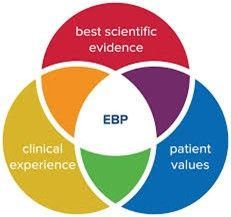Ego-dystonic vs. Ego-syntonic: Personality Disorders Distinctions
Clients who enter mental health treatment come in with either an ego-dystonic or ego-syntonic view of the world. Using this characteristic of abnormal psychology assists the clinician in evaluating for personality disorder or a mental disorder. Both refer to psychoanalytic terms about how the ego, or our rational minds, manages our thoughts, feelings, values, and behaviors.
The difference between ego-dystonic vs. ego-syntonic has to do with whether a client sees their world in harmony or not. When most individuals experience mental health problems, they undergo some form of emotional pain. They lose some part of their functioning in their relationships, their home life, or their school or work. And the client is aware that something is not right. A form of conflict needs to be resolved for them to return to their typical functioning level. These individuals live with ego-dystonic behaviors. They know there are problems and that the problems originate with them. In 2011, Drs. Louise Bradvik and Mats Berglund studied the effects of anti-depressant medication on suicide ideation with ego-dystonic and ego-syntonic clients. They found that the ego-dystonic clients had poorer responses to the medications and higher incidences of successful suicides. This evidence could conclude that ego-dystonic clients have more difficulties resolving emotional pain than ego-syntonic clients.
The client who has ego-syntonic traits does not see problems due to their personal behavior. For example, suppose you have a problem with someone with an ego-syntonic personality. You talk to them about your concerns. But by the time you finish and they respond, you may leave the conversation thinking that you are at fault, instead of vice versa. The client who has ego-syntonic traits believes that “You’re the problem, not me.” The person with an ego-syntonic personality may not view their traits as a problem; instead, they may view them as an asset. Dr. William Hart and his associates in 2018 examined subjects with personality disorders. They indicated subjects found their traits were useful to them and not causing them emotional pain.
In looking at the distinctions between the individual with ego-dystonic vs. ego-syntonic traits, the world is either in disharmony (ego-dystonic) or harmony (ego-syntonic). When clients with personality disorders enter treatment, it may be due to mental disorders such as depression or anxiety that are impinging on their personality traits. Whereas with mental disorders a client can recover from an acute episode, a client with personality disorders can only resolve the conflict yet continue with their traits intact.
Praxes offers training in personality disorders. For more information, please contact us.




